When the 2025 Ram 1500 debuted, it sparked a considerable degree of outrage. It didn’t go all-electric, or unibody, or even change that much. The styling’s still largely the same, and even the frame is familiar to truck fans, but Stellantis made a big mistake. It got rid of the Hemi V8, and that sent the internet into a frenzy.
The truth is, Ram, Dodge, Jeep and Chrysler wouldn’t be where they are today without the Gen III Hemi. So why did the Hemi return after disappearing in 1971 at the start of the Malaise Era?
Well, back in the early 2000s, Chrysler needed a replacement for its aging LA-series V8s, and it decided to stick with a familiar formula and bring back a classic name. This new 5.7-liter V8 would still be an overhead valve unit with a 90-degree bank angle, a cam in the block, and pushrods, but it would benefit from serious tech updates. We’re talking two spark plugs per cylinder for improved combustion, distributorless ignition, and available cylinder deactivation. The name of this motor? Hemi.
That Thing Gotta Hemi, Sweet?
Hemi, for the first time in almost 40 years, became a household name across America again. It was an instant hit, used in everything from the Ram 1500 to the Chrysler 300C to the Jeep Grand Cherokee, and spawned awe-inspiring variants like the 6.1-liter Hemi, the 6.4-liter Hemi, the 6.2-liter Hellcat, Redeye, and Demon engines, and the 426 Hellephant crate motor.
Throughout the lifespan of the 5.7-liter Hemi V8, Chrysler kept updating it. The first examples made 345 horsepower and 375 lb.-ft. of torque in trucks, but for 2009, the motor gained new cylinder heads, variable cam timing through a single phaser, and a selection of new intake manifolds to increase output in the Ram 1500 to 390 horsepower and 407 lb.-ft. of torque. Further light revisions in 2013 bumped those figures to 395 horsepower and 410 lb.-ft. of torque, plenty of juice for towing and hauling.
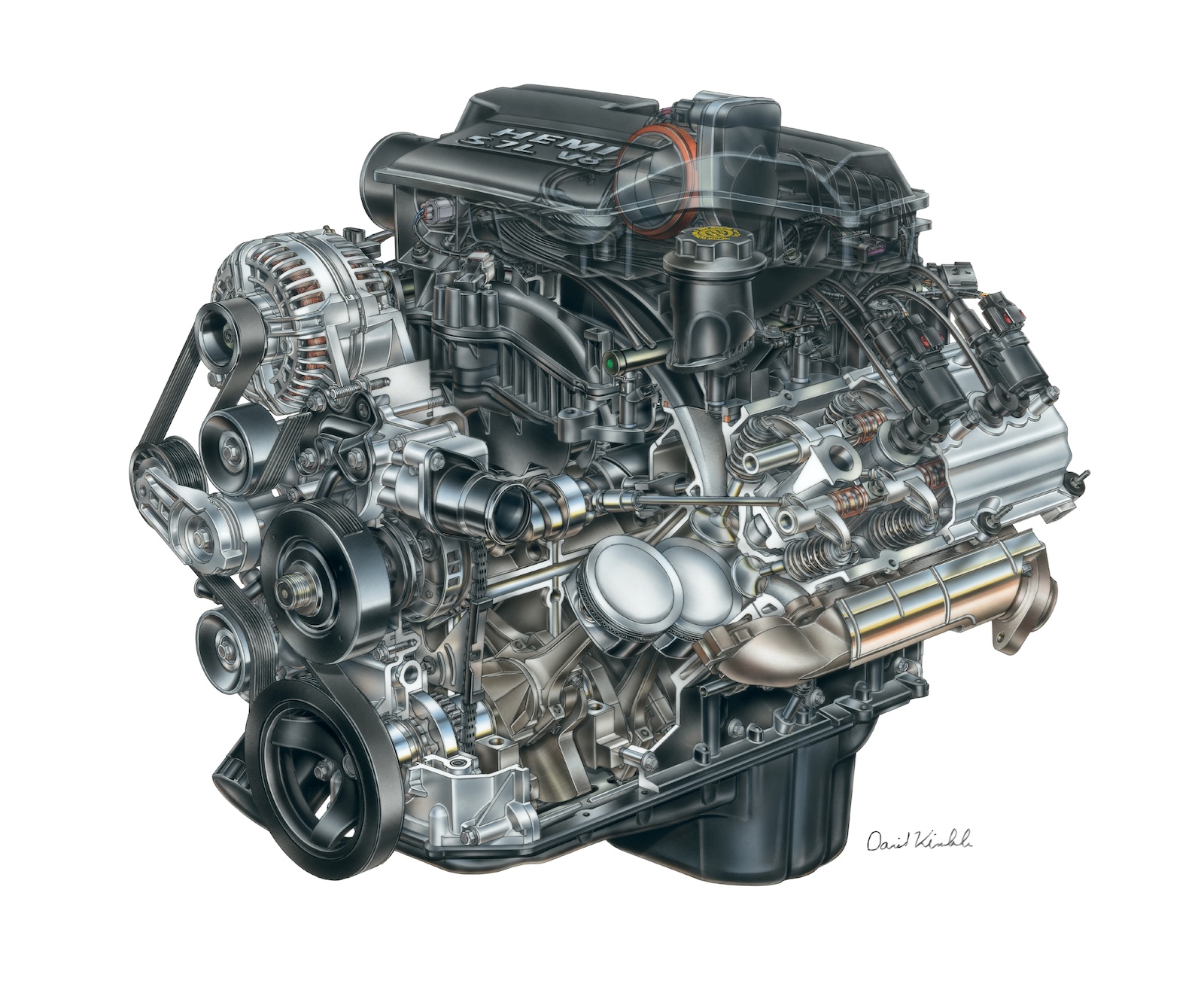
For 2019, the Hemi took another step forward, adding an optional 48-volt mild hybrid system that replaced the starter motor and alternator with a combination starter/generator and a battery pack behind the rear seat for smoother automatic stop-start operation and a two-MPG increase in fuel economy. The result was the smoothness of hot garlic butter dripping off crab legs, steady and confident propulsion for a big half-ton ship. Sure, it wasn’t as sophisticated as Ford’s 3.5-liter Ecoboost V6, but with impressive execution, the Hemi still had a place in the world.
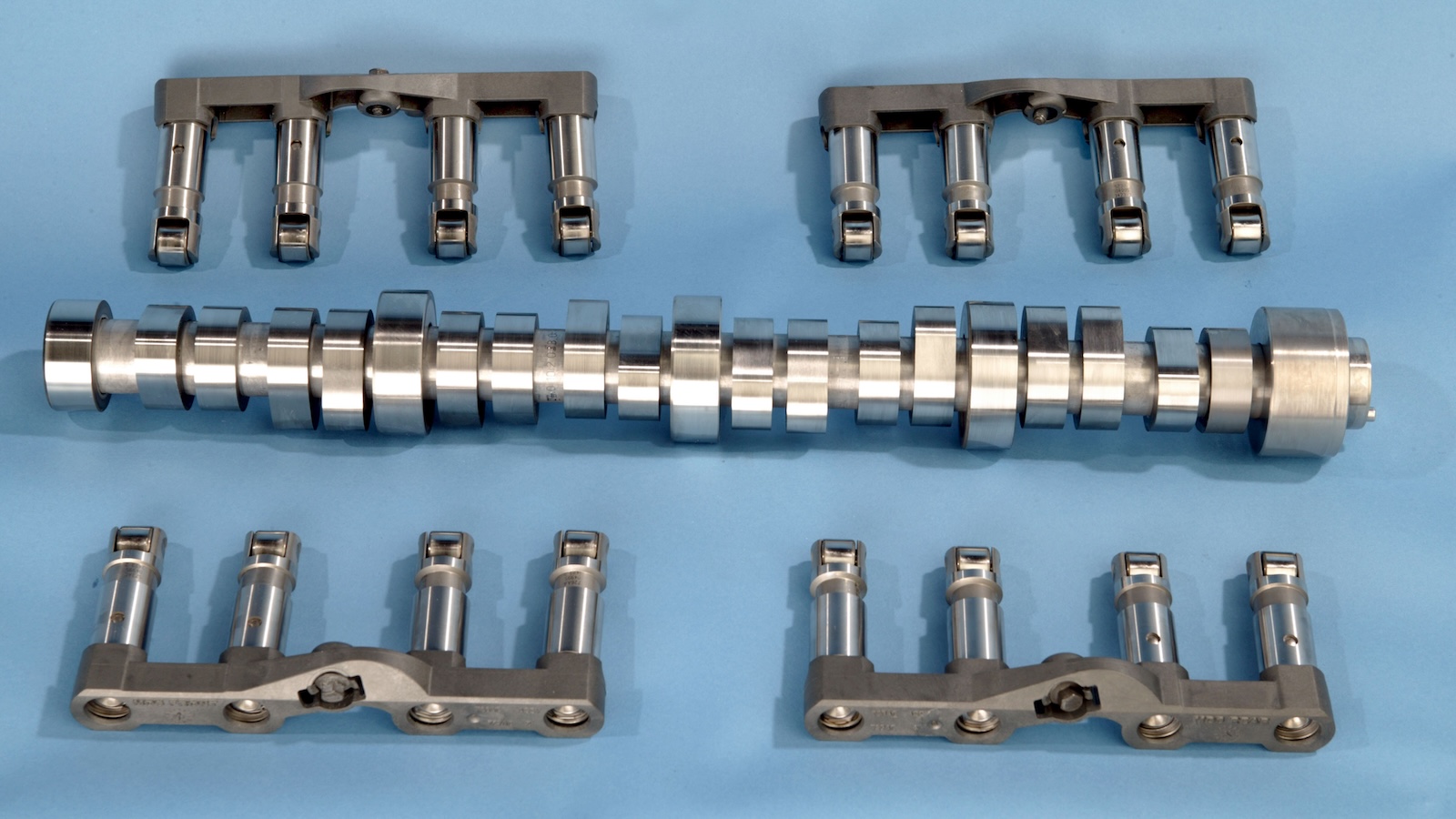
Over the years, the Hemi V8 gained a reputation for being relatively robust, save for something known as the Hemi tick. Really, it’s two different ticks, one fairly common and benign and one less common but more critical. If the tick seems to be coming from one or both sides of the engine, it’s likely an exhaust leak at the manifolds. Usually, this is fixed with new manifold studs and gaskets, but occasionally the manifolds themselves crack.
However, if a tick seems to be coming from more-or-less the center of the engine, you could be looking at valvetrain wear. Usually, this more centralized tick is a symptom of lifter failure, which can eventually chew up the camshaft. Thankfully, if caught early, a new camshaft and new lifters can fix it, and some owners delete cylinder deactivation to reduce potential failure points in the future.
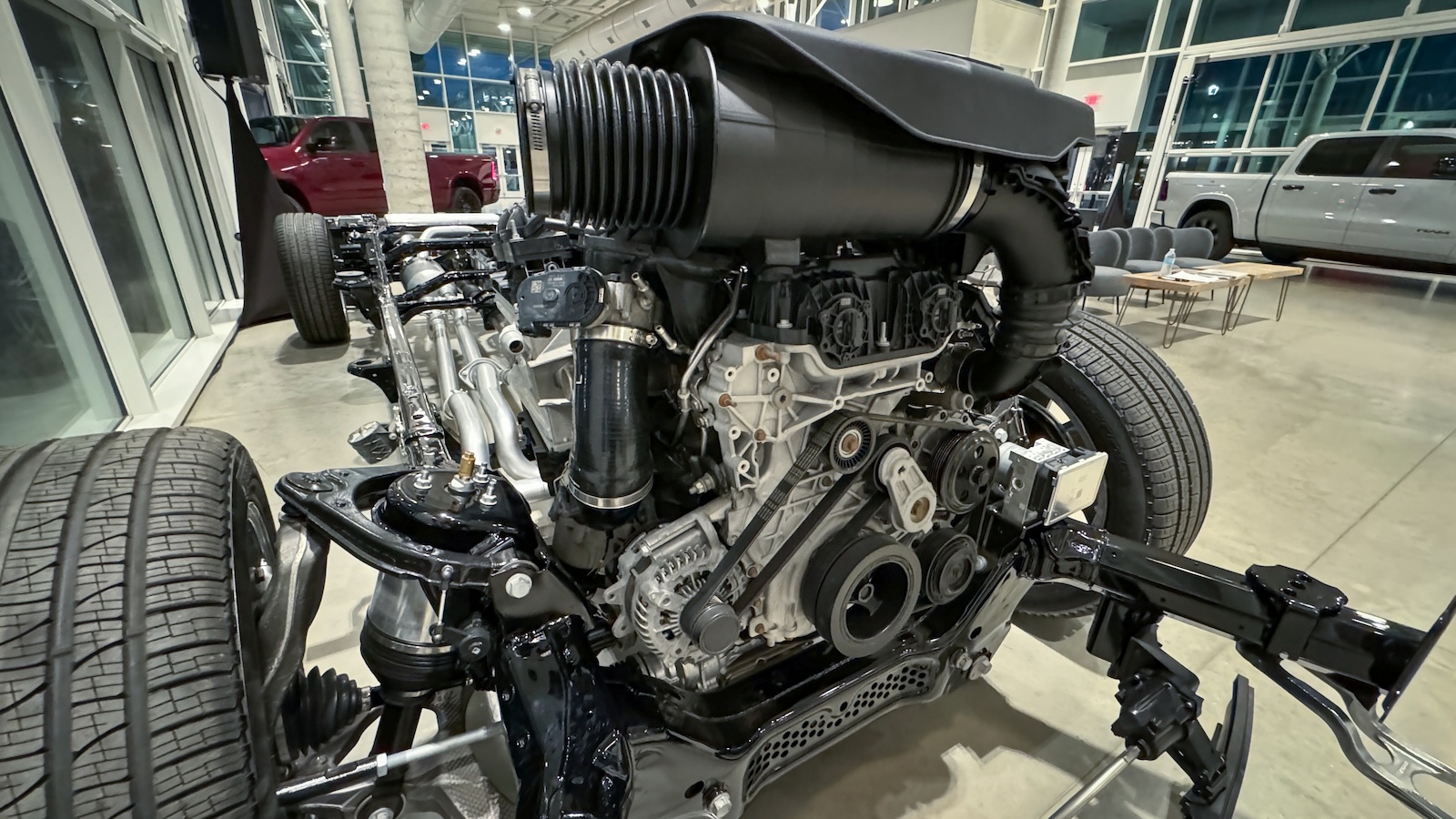
Unfortunately, the formation of Stellantis in 2021 under CEO Carlos Tavares brought forth a change in strategy that would see the Hemi phased out. In 2024, it was replaced in Ram 1500 half-ton pickup trucks with a new three-liter turbocharged inline-six called the Hurricane engine, producing 420 horsepower and 468 lb.-ft. of torque in its standard output configuration and 540 horsepower and 521 lb.-ft. of torque in high-output trims. Combined MPG changes were minimal, and while the new engine promised more punch than the old Hemi, customers weren’t as easily swayed.
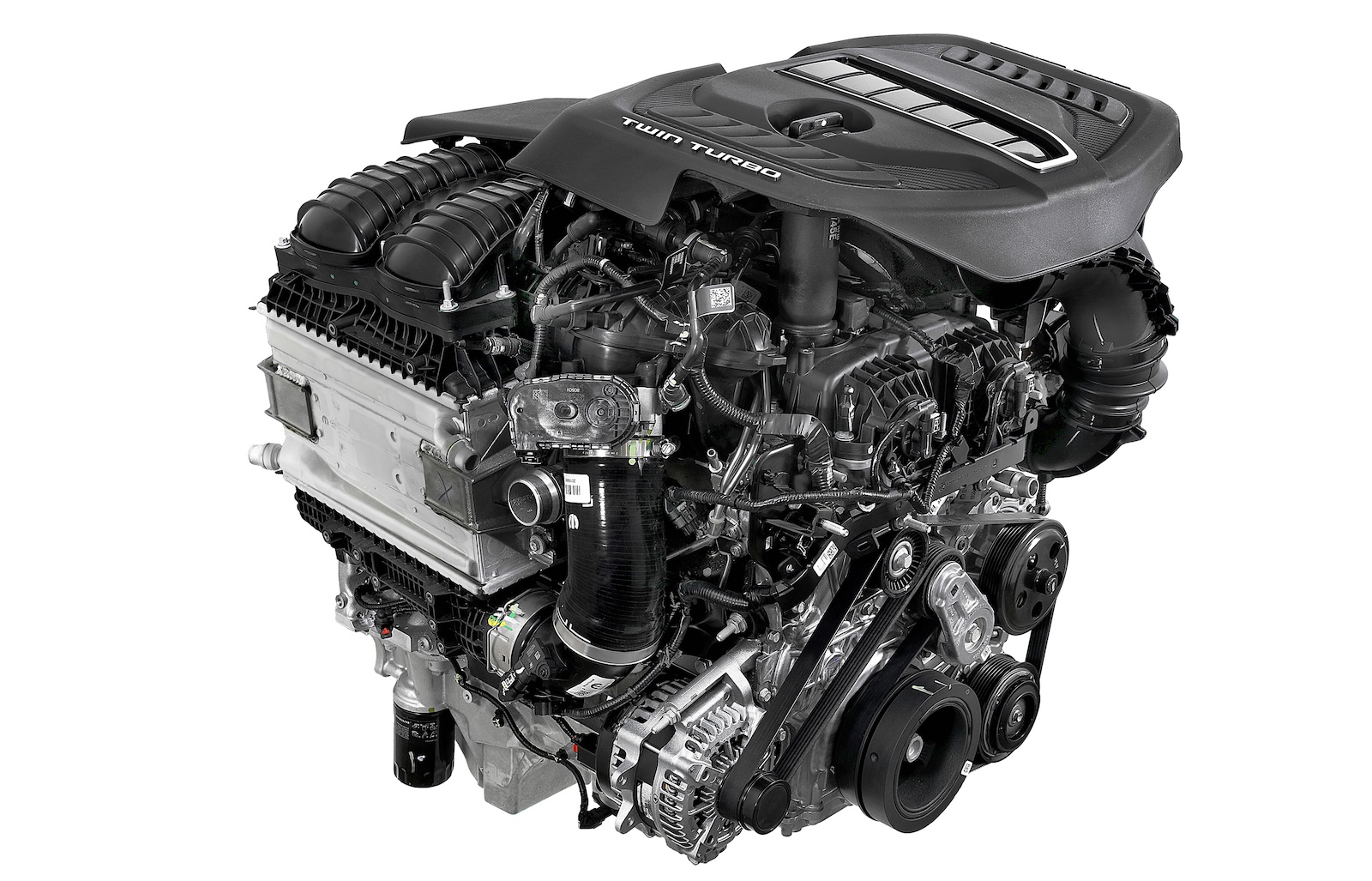
See, the V8 was a known quantity, whereas the Hurricane engine was something new. Fleet customers had decades of data on running costs of the 5.7-liter V8, the aftermarket had solutions for any potential problems that could crop up, and when you use a truck for work, predictable reliability matters. It’s also worth noting that the three-liter turbocharged Hurricane inline-six engine that replaced the Hemi in half-ton Rams now has known failure points of its own. While most of these issues should be covered under warranty since this engine is fairly new, Hurricane owners are reporting misfires, instances of thermostat failure, and short 12-volt battery lifespans.
The Hemi V8 Was Efficient In Its Own Way
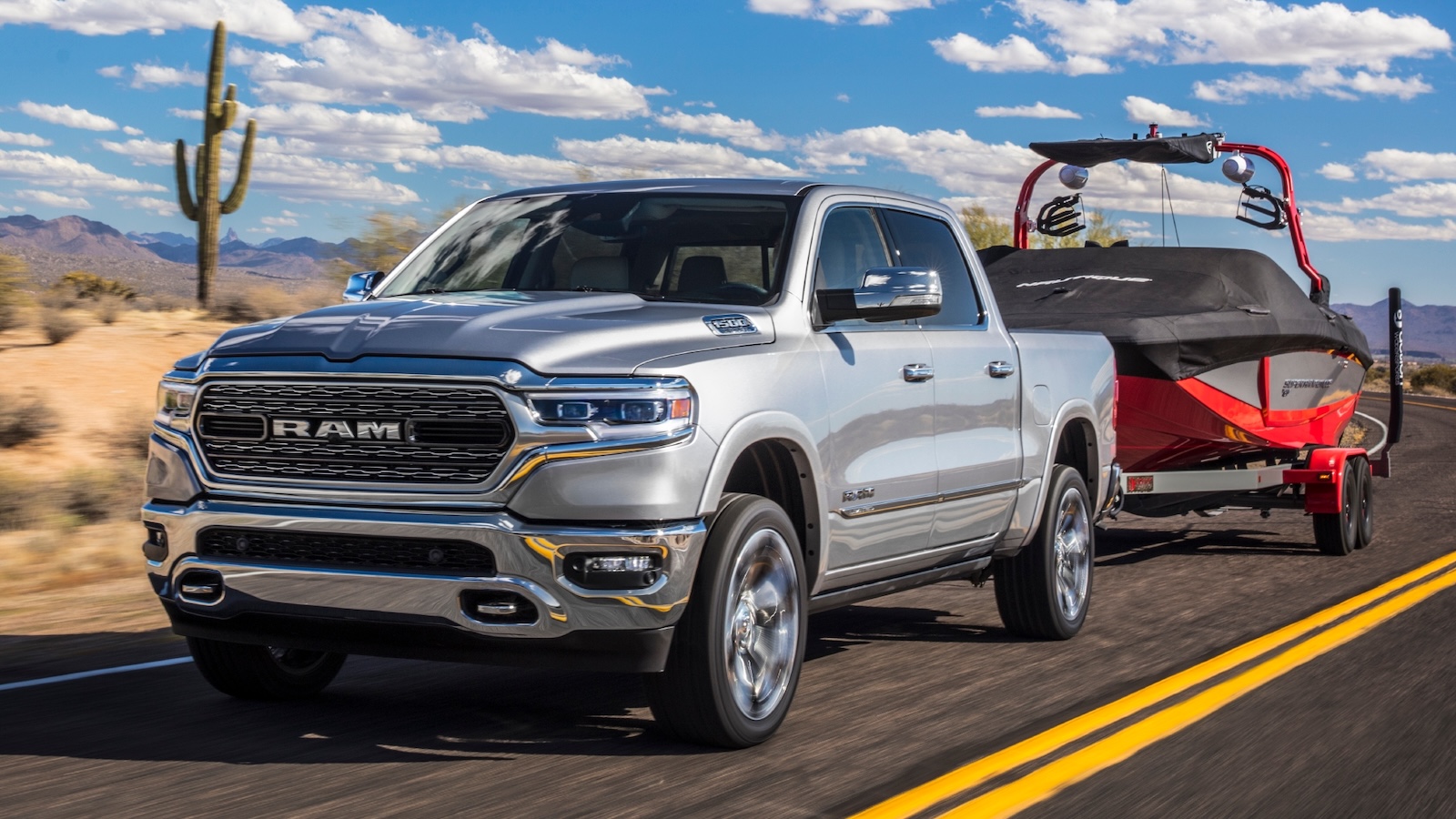
Not only was the Hemi proven technology, it also had some financial benefits over the Hurricane inline-six, especially in truck applications. While both engines run fine on 87-octane fuel around town, for the 420-horsepower standard-output Hurricane engine, Ram states that “The use of 91 or higher octane premium gasoline will allow these engines to operate to optimal performance. This increase in performance is most noticeable in hot weather or under heavy load conditions, such as while towing.”
Meanwhile, the recommended fuel for hot climate towing with the Hemi V8 was mid-grade 89-octane. Assuming a 26-gallon tank and current AAA national average gas prices, that’s savings of $9.23 per tank. Considering the combined fuel economy ratings are identical for the four-wheel-drive truck with the standard-output Hurricane or the Hemi, that’s money in the pockets of drivers who picked up the last of the V8s.
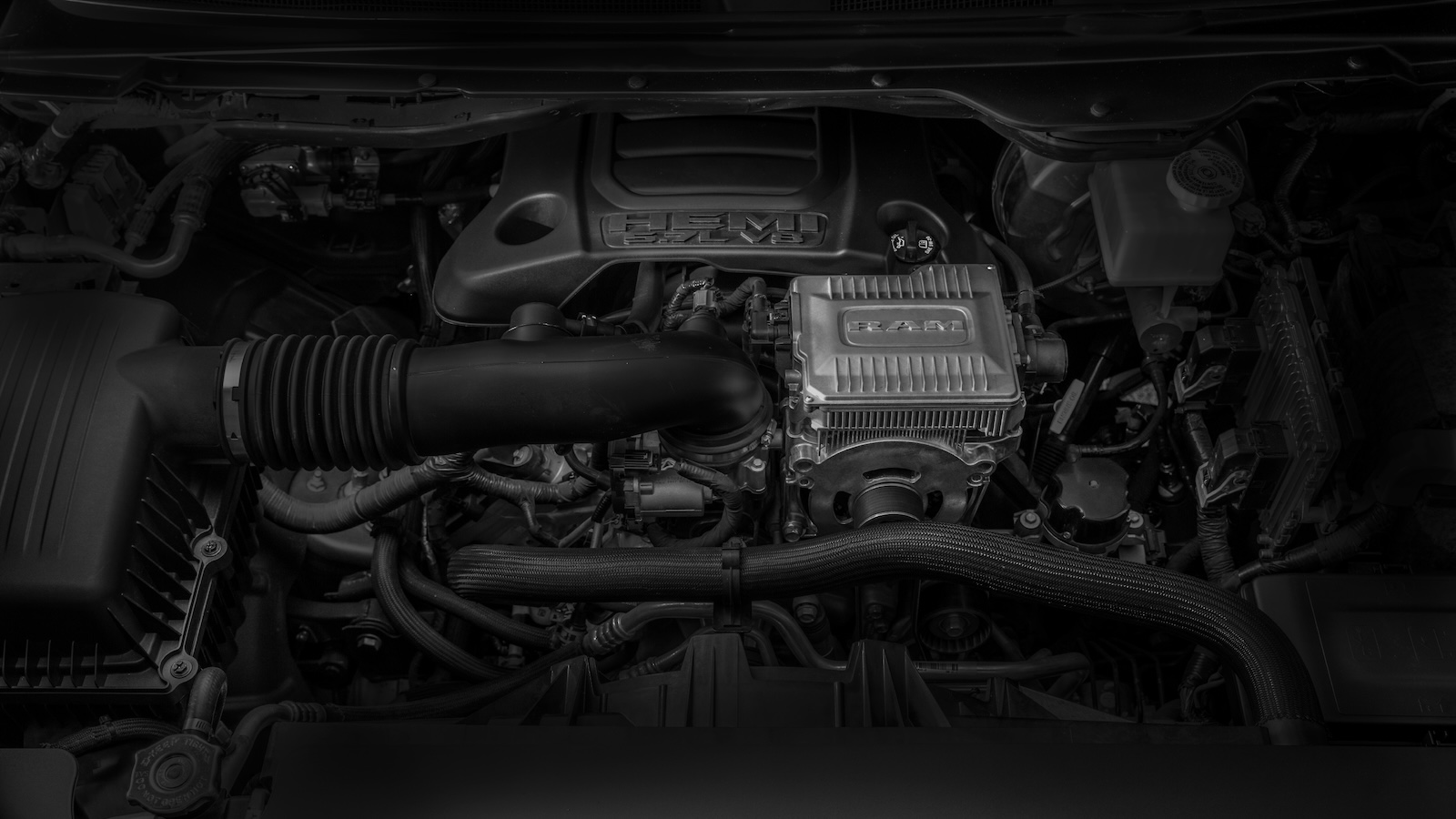
More than that, the V8 was a great-sounding piece of American identity. Thanks to legendary muscle cars of the 1960s, everyone knows what a Hemi is, and the low rumble of a cross-plane V8 is the time-honored soundtrack of main streets from Montana to Alabama. It helped make the Charger and Challenger legendary, hauled heavy loads in Ram trucks, and helped Jeep Grand Cherokees become even more capable overlanding rigs.
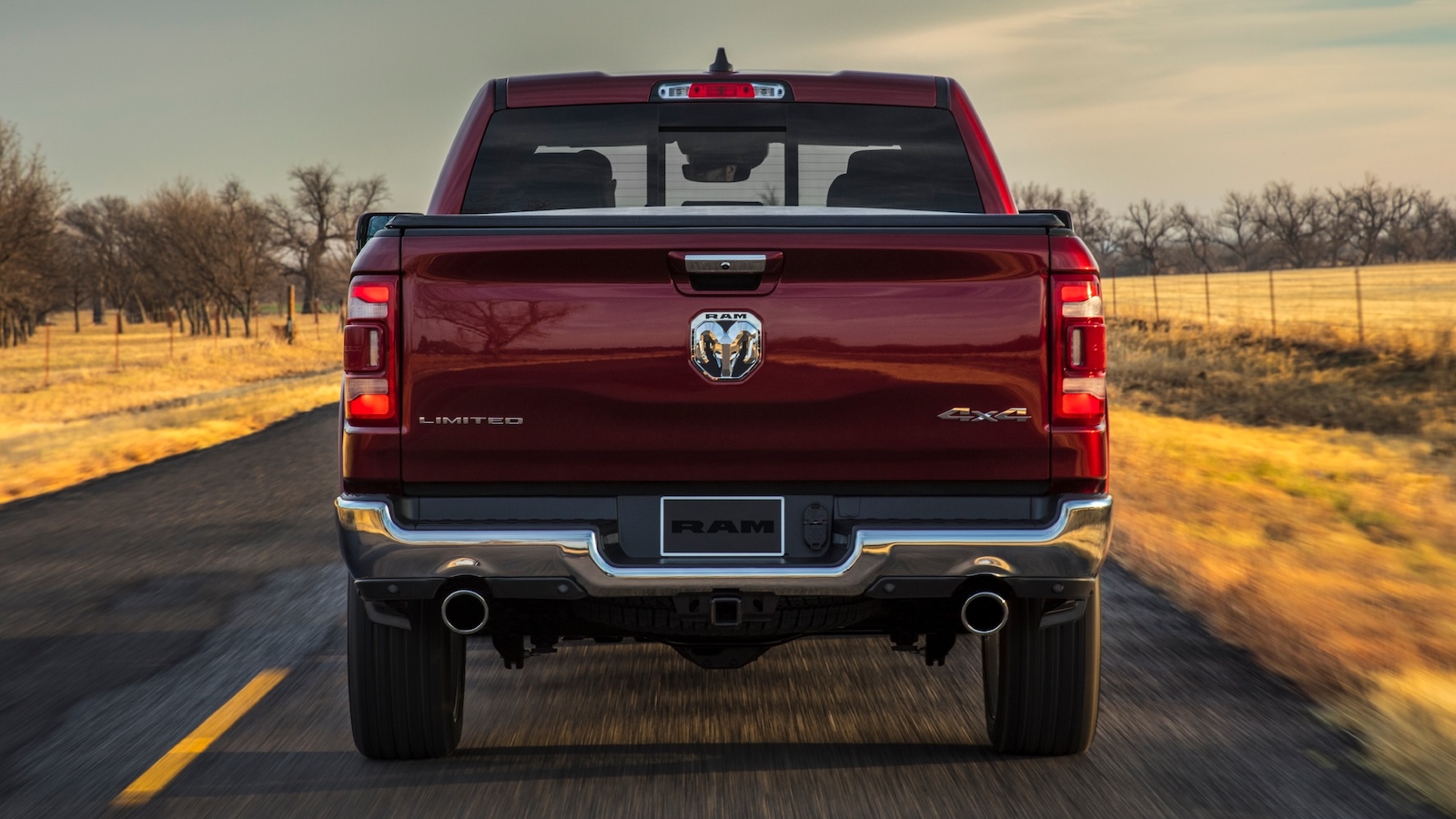
The modern pushrod V8 was a formula no other country copied, a distinct character trait in an increasingly homogenous world, a barbecue in an air fryer landscape, and a manifestation of Occam’s Razor. Compared to some twin-cam, force-fed, intercooled, variable-lift contraption, it’s simple, because simple’s what you want for hard work.
Top graphic credit: Ram
Support our mission of championing car culture by becoming an Official Autopian Member.






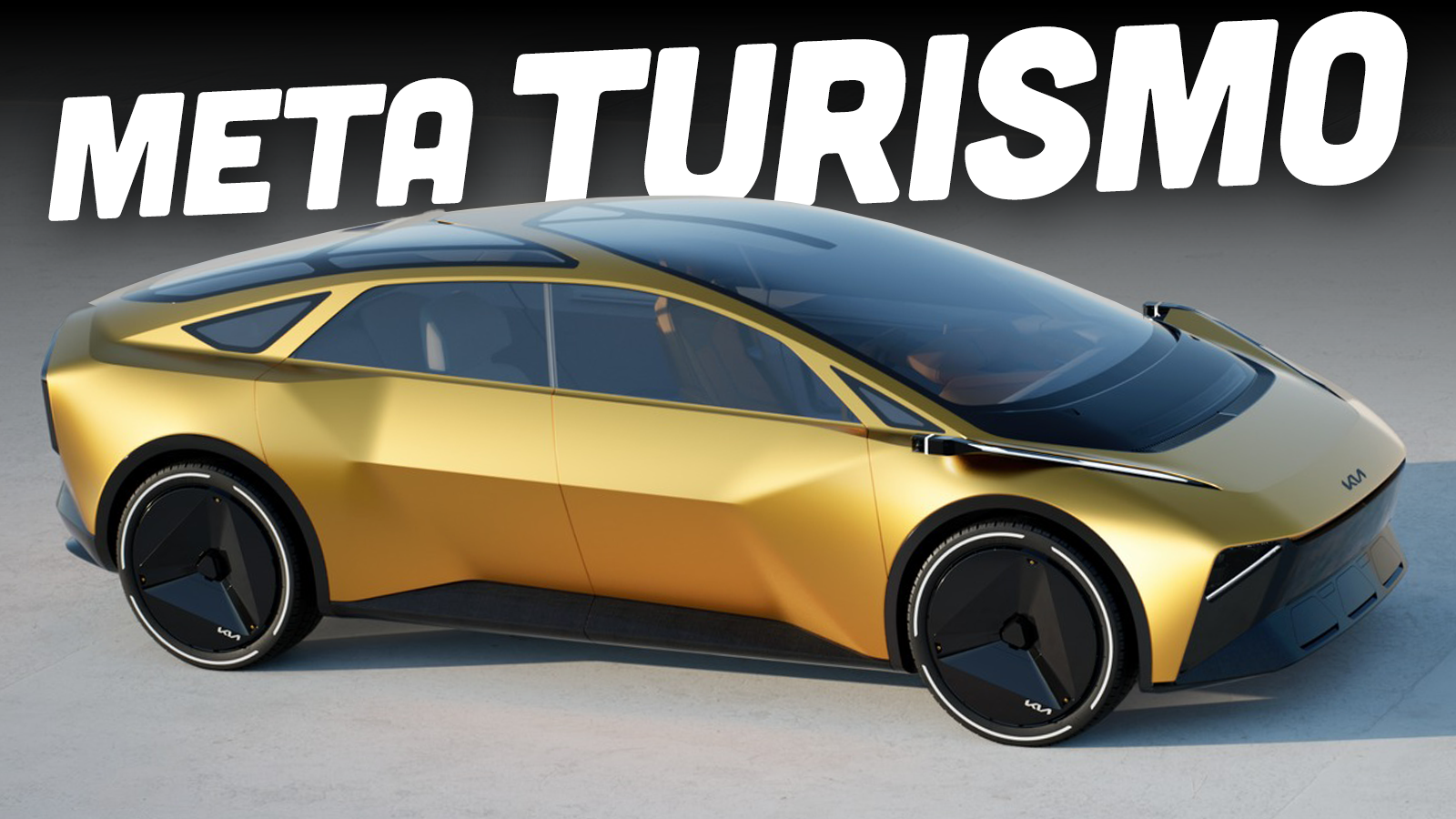
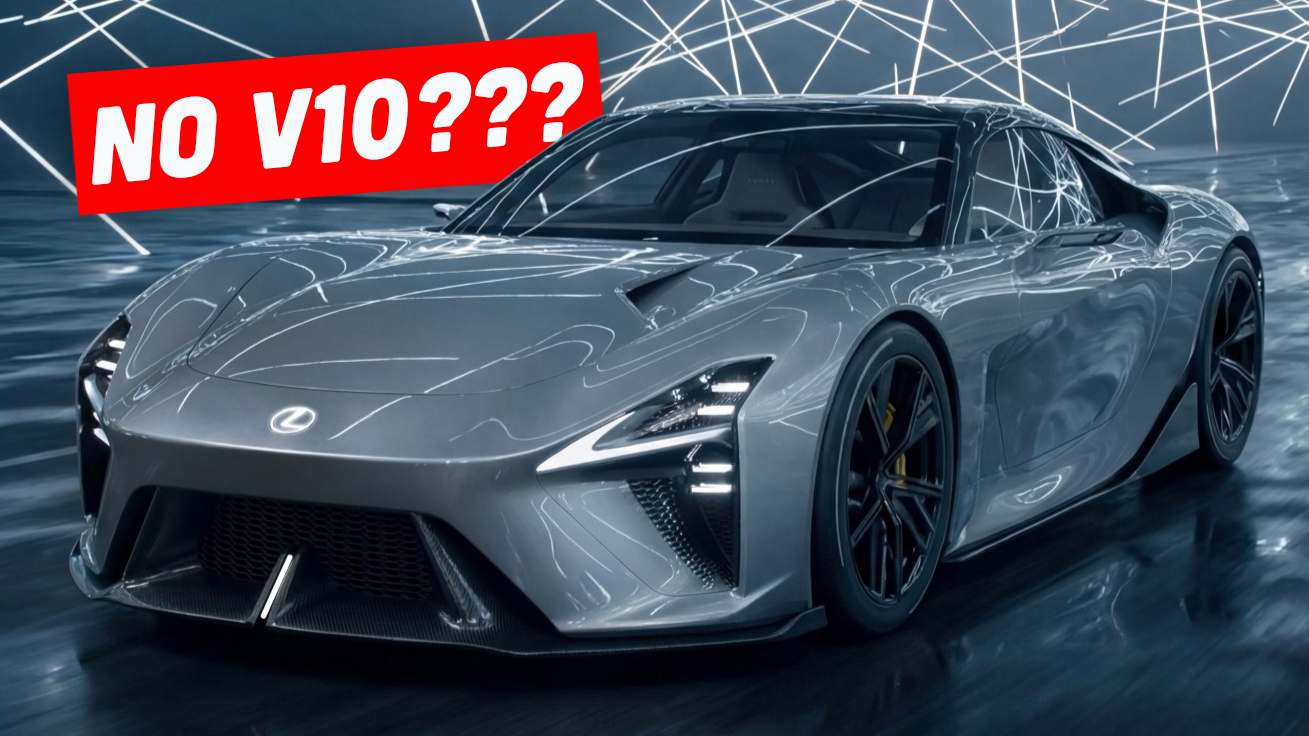
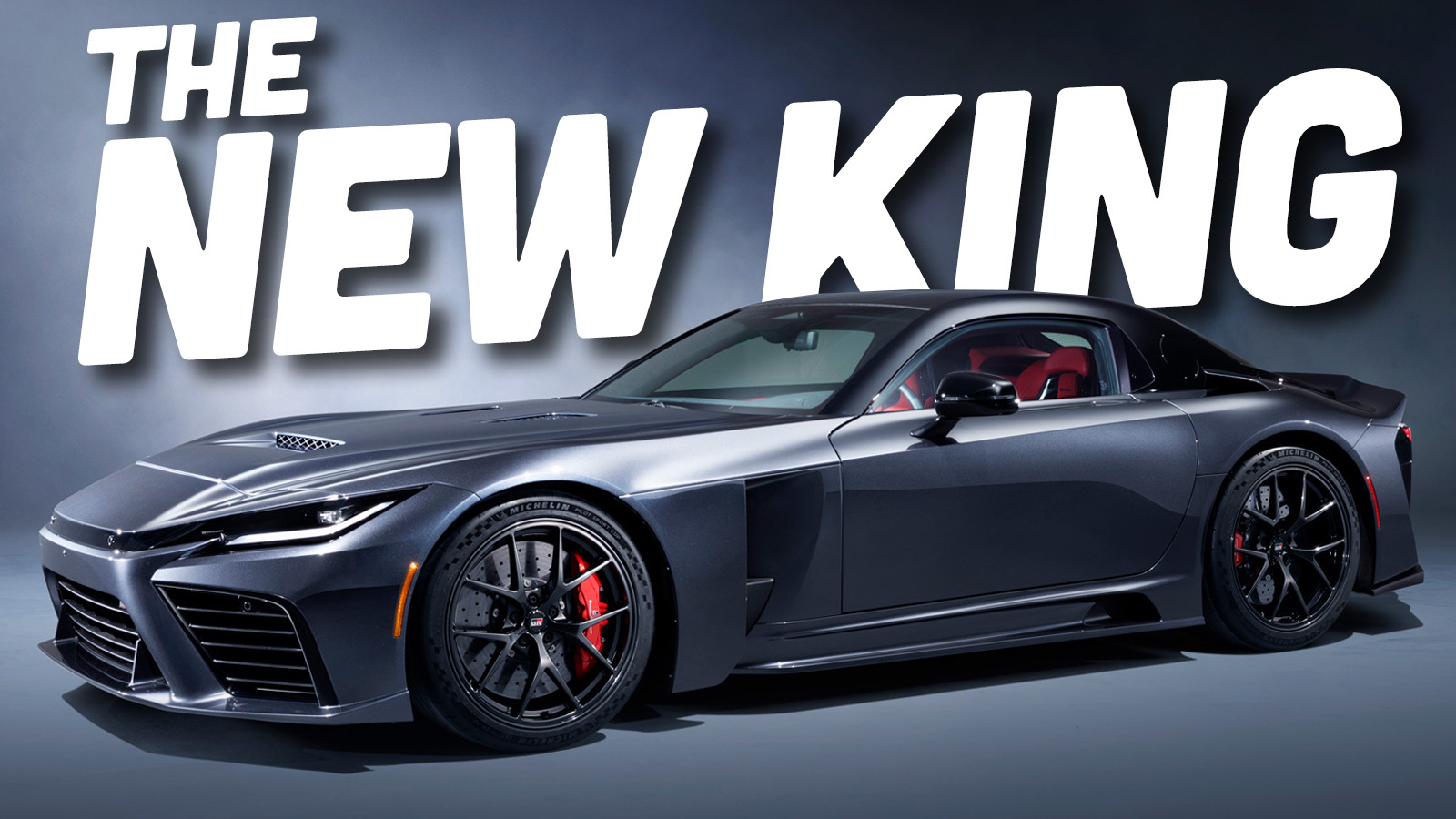
Oh hey, the Challenger in your header image is a visual twin to mine.
I got mine with the 6-speed, and it was the last manual Hemi Orange R/T left new in the country when I bought it in 2011 as a leftover 2010. These hadn’t really started selling well due to the continued effects of the recession. I paid $34k out the door for a car that stickered just about $42k.
I’ve put 94k miles on it since then, drove it all the way across the country, and the only issue I’ve had is a hood seal (twice, the aero on these cars seems hard on this part) and the TPMS sensors dying once. The 16 spark plugs every 30k miles is annoying, and my mechanic says it’s not strictly necessary, but it always runs smoother when I replace them.
I considered trading it on a Hellcat back in 2020, but I’ve been working from home and putting less than 6k miles a year on it since. I probably should have gotten the Hellcat, but oh well.
It’s a very good question because compared to an LS they were much heavier and less reliable and more maintenance intensive and a fair bit larger and in the pros column they had… They sound better? Dodge put tons of boost behind it from the factory?
Like when Ford had the spark plug ejecting 5.4 and the boat anchor SOHC 4.6 I guess they were pretty competitive but that hasn’t been the case for 15 years now, nor has the HEMI been competing with first generation LSx motors this whole time.
The “Hemi” engine is…fine. But I could never get over the marketing as a “Hemi” because…it’s NOT a hemispherical-combustion chamber. It has almost nothing in common with the actual hemi of yore, except that it’s got 8 cylinders.
That’s not to say that it’s not a better engine than the old ones–I’d rather have this one in my DD than a real hemi, for sure–but it just digs at me that it tries to imply it is…
/rant
A friend of mine had a brown 1980 Toyota Corolla wagon in HS. Less than 75 hp of 1.8L carburetted, pushrod fury that thing was an ACTUAL Hemi.
I had a brown 1980 Corolla! I was driving a Hemi and I didn’t know it! Damn, I could have picked up more chicks, err…induced women to consider riding in my vehicle.
I half-remembered that the Hemi wasn’t actually a hemi, thank you for confirming.
It’s got all the things that made the original hemi good, with fewer downsides.
Opposed valves are canted to make room for larger valves and deshroud them as they open. Twin spark plugs were added to the older drag racing Hemis to get faster charge burn. And they needed that, because the high dome piston required to get the compression up on a true hemi head makes for a thin convoluted combustion chamber at TDC that slows flame propagation. And it’s a heavier piston to fling around. The two quench pads as used on the Gen III Hemi head are a way better solution.
Think of it from the perspective of the the fuel air charge – At TDC or even the ignition event, the Gen III Hemi with flat top pistons is actually much closer to a hemispherical chamber than a round cylinder head with a pyramid in the middle of it.
Weren’t these engines prone to sludge? The one time I encountered one in the machine shop it was the BIGGEST pain in the ass to clean.
You may be thinking of the “semi-Hemi” 4.7L that was being phased out as these with being phased in. They were extremely prone to sludge due to inside-the-timing-cover water pump drips once the weep hole became clogged and miniscule oil passages in the top end eventually leading to top end oil starvation. Much the same trouble on the 2.7L little brother.
These were pretty good overall. Basically everyone that used whatever their form of MDS/AFM was suffered the same problems with lifter failure eating the cam. EcoBoosts run nice when they’re new but they’re utter rubbish for reliability and longevity. Godzilla, anyone?
This was 20 years ago so I think you were right it was the 4.7L. Appreciate it!
The 5.7 was cool when it came out, but the 2009 revisions and everything since really hasn’t done the motor any favors. It’s easily outclassed and out sounded. The Hemi has some pretty awesome variations, but the 5.7 ran its course years ago, and the only Hemi worth anything anymore is the Hellcat.
As a Mopar guy myself, it’s cool and I do want at least one Hemi in my life (I’d for damn sure complain about the stupid 16 spark plugs every chance I get though), but it doesn’t need to exist anymore. The Hurricane is better in every way, even with Stellantis’s cost cutting.
I really wish it’d go away. Stellantis needs to give CDJR something of substantial value, like maybe product or better quality?
It’s likely more a reflection of the clientele of Stellantis/Ram, but I’ve never been impressed by the engine/exhaust note of a Hemi.
Much like some big Altima energy, there’s a lot of negative sterotypes around the average Ram driver that only makes me wish the Hemi would die off so these people would find different vehicles to be in. But then, how would I be able to easily spot them on the road?
RAM owners are statistically some of the most dangerous on the road in several metrics. There are plenty of articles about it out there. As this very site has shown, Altima drivers rank up there as well. RAM sits in a particularly unique position because they’ll finance absolutely anyone (which tends to lead to more reckless drivers) and machismo is a big part of their brand.
When you put a bunch of fake tough guys with 300 credit scores in 6,000 pound vehicles that somehow hit 60 in the high 4s you’re gonna have a bad time. And by you I mean everyone other than the guy behind the wheel…
It’s almost like we live in the same area.
Except for neglecting to mention 75% of KIA and Hyundai drivers here.
When doing the mental math regarding how many of all of the above drivers that will be encountered on a trip to the store, etc. it can be a huge pain in the ass to leave the garage.
Bless their hearts…
OTOH as both a fan and owner of the 60’s series HEMIS these so called modern ones are a far different type of animal.
I fart in their general direction…
The 5.7 was a cool motor when it launched, I remember plenty of folks doing the Hemi question whenever you saw a new Charger or Ram truck. Hell, it probably sold more V8 powered vehicles than any other ad campaign.
It’s odd that the Hemi hasn’t seen as much love in the car community as the LS has. I know the LS is a tougher engine off the bat (5.7 Hemi pistons and rods are a weak point) but there seems to be enough out there in junkyards that you could swap one into an older truck or car without much trouble. I’m sure size has something to do with it, but old cars have plenty of room!
Its harder than just size. They made loads of changes constantly across early Hemi’s. So you basically have to pull all the parts together from the same vehicle. The wiring can be a nightmare as its not always an independent harness. Some of them even required stuff like the gauge bezel be included in the swap.
It was so rough on the early Hemi’s that someone built a kit where you swapped all the sensors to LS, then used an LS harness and computer to run it.
Now though you can also get swap kit from Mopar to fix a bunch of those issues. I love the Hemi, but its both harder and more costly to install than an LS. So you have to really want the Hemi.
Go figure, I’m sure the twin spark system doesn’t help either. Same issue with the 5.2 and 5.9 Magnum engines, not a lot of love aftermarket for those either.
Right? I love me some Mopar and I’m planning a 5.2 swap hopefully in the near future. I bought a seriously rough 1st gen Durango for the engine, I have a dakota manual trans, and an old truck its all supposed to go in to. REading up on the Magnum swap, I found that I should go get the engine harness from a 1500 truck. In that chassis its a standalone harness, making the wiring a million times easier for that at least.
Biggest facets to my knowledge are the electrical system, transmission bolt pattern, and ECU.
The LS benefits from being first on the market in terms of mainstay modern V8s, but it also changed relatively little from the previous Vortec (small block Chevy) engines. The bellhousing pattern is effectively identical, you just need an adapter type flex plate/clutch, so you can use any SBC transmission. Because of being the first ‘modern’ fleet engine, the aftermarket also adapted them to just about any transmission the aftermarket likes as well.
The engine harness is similarly simple on most donor engines (ignoring optispark and early corvette), so it can be adapted to any aftermarket ECU easily. It’s not even that difficult to adapt to run on older oem ecus provided they can be tuned. Obviously, swapping to newer/aftermarket is better than going backwards, but it’s doable.
Finally the early GMT800 ECU’s are functionally what many aftermarket ecu’s are based off of. People to this day use them on all sorts of non-GM engines, because they can be tuned via HPT and are everywhere for not much money.
Those factors with the relatively robust mechanicals means, plug small package size you don’t get with a SOHC/DOHC V8, they cornered the market. Dodge electronics weren’t designed with the same modular/silo structure, so frequently you needed every single component for the ECU to function. Famously, Roadkill swapped the entire electrical system from a hellcat donor car in order to get the engine swap to work, including the fuel tank. That problem existed for a long time even on older vehicles.
I am curious to see how the new Charger ends up playing out. I’ve read plenty online claiming both that it was quietly designed to accept the Hemi but also that its been completely denied that the Hemi would fit at all. Then there’s the video of an ICE Charger mule out and about with ghetto dual exhaust that sure sounds like a Hemi when it starts up, seemingly indicating that the idea is being tested by Dodge?
I like the Hemi. Its not a perfect engine by any means. And its definitely harder to swap in to things than an LS. But I still like them. For Domestics, I’m really a Mopar guy at heart, which is brutal when you are also cheap. Cuz its almost twice the cost to do anything Mopar as it is to do it Chevy.
“Won’t fit” Is just an easy canned response whenever a journalist or fan asks why x engine/trans isn’t in y vehicle. The reality is if they want to fit it they will. It’s just a matter of cost vs profit.
You are right about “won’t fit”. My impression has been “won’t fit without serious re-engineering” and any potentially large costs associated with crash certifying the car again, plus changing the parts in the assembly line to create the more versatile chassis etc. so yes, its all money.
The ICE Charger is basically still vaporware. They’ve delayed the launch of the straight 6 multiple times and there’s been close to 0 news on it or updates from Stellantis. I’m actually considering one as my next car so I’ve been keeping up with it pretty closely.
It’s hard to know what’s going on. Some folks are suggesting that they’re delaying it to try to pivot to a Hemi, but the S/O Hurricane is going to be the GT trim, which has always been the base in modern Chargers/Challengers. The Hurricane is also absolutely massive (don’t let the displacement fool you), so I don’t think there’d be too many headaches shoving a 5.7 in stuff that has it. The 6.4 is another story….
The 5.7 & 6.4 are the same size.
Surprising use of the past tense in the headline when Stellantis not only continues to sell these engines, but is expected to be bringing them back to more vehicles very soon.
Back in ’05 when I was able to score a 300C company car, I still vividly remember doing the first hard launch and laying down rubber like it was 1970 again. 0 to 60 in 5.3 doesn’t seem all that impressive by current standards, but it blew people away 20 years ago.
The 5.7 Hemi was a shot across the bow to all our competitors who half assed their powertrains in the mid 2000’s. It took them a long time to catch up, and then Chrysler launched the Hellcat.
Hopefully the Hemi still has some life left in it now that Tim Kuniskis is back in the house.
I had an 06 300C. it was terrible in bad weather, but man, it was a reliable car and fun to drive otherwise. I sold it with 180K on the ticker. and the guy who bought it did it in when he put a new battery in, backwards. caused the vehicle to no longer charge and he could never get it fixed without supposedly needing to replace the entire vehicle harness.
The Dodge Hemi made such great sounds, and it could break the tires loose on whatever it was put into. They have been fun cars to drive. They provide all that visceral feedback that driving a V8 should. I went from that to an EV because in California getting 14 mpg on my daily driver was terrible for my bank account.
I had a truck with the 5.7, a Magnum with the 5.7, a Charger with the 5.7, and then a Scat Pack Charger. While the 5.7 was a good engine the Scat Pack just felt like a lot more than the numbers said.
Personally, I never much cared for the 5.7L. It always just seemed like an as ran compared to GM and Ford powertrains; especially considering that GM would let you get 6.2L in their trucks and Ford had two better options (3.5L & 5.0L) where Ram stupidly topped out on the 5.7 for years. Dodge’s bigger stuff like the 6.1L and 6.4L (392) though? Heck yeah, give that to me all day long! Why the hell didn’t Ram put one in the 1500 is mind mindbogglingly stupid to me. The 392 is so charismatic I almost made me forget about the rest of the
heapvehicle surrounding it and I nearly got a Charger. It would be like if GM simply stopped at the 5.3L in the Silverado and then started beating there chest about “hurrr durr, we are the kings of V8s” when they have a clearly bigger, better option sitting right there, but decided to never use it.Remember when they made the Ram R/T and didn’t put the anything more than the 5.7 in it. Cool truck, but damn, deserved the 6.1 or 392. Or they could have gone buck wild and thrown the 426 in there (if it fit).
I mean they kind of did have 6.2 in a 1500, it was just supercharged and pretty much the top of the price spectrum. Why they never made the special edition warlocks and rumble bees without using even a BGE 392 seems off to me too. A slightly uptuned 392 in a little 2WD Little Red Express would have been pretty good as well,
I care about climate change but even I have to wonder what the point of some of this downsizing is. Smaller turbo engines don’t actually get better fuel economy in practice. They’re literally calibrated to do well in testing. They put up nice looking numbers in those circumstances but when you get them in the real world it’s usually a wash. I’ve never owned a turbo car that came close to managing its EPA ratings.
They emit a bit less, and that’s certainly a win…but they require much more intensive maintenance and don’t last as long. Oil change intervals are shorter, there are more parts/complication, etc. I’d be very interested to see the emissions math once all of that is factored in…and having 1 truck with a Hemi that lasts 200,000 miles is probably going to do less environmental harm than two trucks with Hurricanes to cover the same distance due to the extra materials it takes to run the turbo engines and…you know, the carbon emissions from building two cars instead of one.
Maybe I’m way off here and someone with more hard science knowledge can correct me…but to me it seems like we’re doing a whole lot of extra work for gains that are pretty minuscule if they even exist at all.
What you state about turbos is not true in a modern turbo engine. They have lower emissions, especially when on light load like highway duty. The longevity of the engine is not an issue; they have the same service intervals as naturally aspirated engines. There are also very few modern HEMIS hitting 200k miles,
The smaller turbos should also just be paired with electrification for a hybrid. Literally every car should be a hybrid at this point.
I get told this all the time but every modern turbo car me or my family have owned has been significantly more trouble than an NA engine would’ve been. I guess maybe we just have rotten luck, but my experience (which isn’t the be all, end all) has been that turbo=way more unscheduled service bay visits.
No, I think you are correct, I had a very low mile rental Buick with a Turbo Chirping away under that hood.
In general lower displacement, Higher output motors are overstressed and last far less time without major repairs. Exceptions of course are always available to attempt to argue against that, and on newer stuff other things tend to complicate the argument. High Pressure fuel pumps on GDi motors making knocking noises, and the various issues with complexity of systems to make a turbo have both low end torque and high end power these days makes it seem like turbo motors are more problematic. I guess in a way they are as the more systems that can fail, the more likely failures will occur. Never mind the difficulty of getting to a lot of things these days and the result is less ability to fix things yourself while more systems that can fail mean more trips to a repair shop.
I think it’s more a representation of the cheapness of things we get. I don’t mean cost to us but the corner cutting that companies do to maximize profits. The quality suffers.
My Jetta TDI made it to 165K when I sold it and that was on the original turbo. The high-pressure injection pump was another story.
I think part of the issue is that consumers have a very irrational desire for more HP and options that make things heavier. All of the efficiency gains are used to develop engines with more power, and as soon as the driver taps into that power, the MPG drops.
Smaller turbo engines aren’t inherently that much less reliable over long distances. There are plenty of commercial truck turbo fours and sixes that go very long distances without issue. But when every penny goes into making peak power, reliability will suffer. Plus, it isn’t as though the Hemi was all that reliable (RAM has a cost of ownership that is near BMW levels), and obviously, GM has shown that they can make V8s that don’t last.
Mostly, car makers simply don’t have any reason to care about long-term reliability. They sell new cars to people who almost never own them to 100k miles. Making things that allow consumers to buy older cars keeps them from buying new ones.
Enshittification marches on
Now more than ever.
Where they seem to fall flat the most is when doing truck things. the 3.5 Ford is surprisingly more durable in F150 form than I expected it might be, but put a trailer on one and the MPG really seemed to fall off much more than any V8 did.
Turbos only get better gas mileage if you’re keeping them out of boost. It’s impossible to do that 24/7. Once the turbo is spooled up they’re chugging gas. I’ve only ever towed with NA engines but I’d imagine that the extra work the engine has to do is probably keeping it in boost more often.
I’ve told people for years that a given power level requires a given air/fuel requirement. 400 hp needs X air and Y fuel no matter the number of cylinders delivering it. This is obviously a generalization, but basically it’s just the truth.
With the EcoBoost V6s you can pick Eco or Boost not both. I love those engines, but man do they guzzle fuel when you choose boost.
Forget in practical use, even the EPA ratings are not much improved. Comparing a 2023 V8 to a 2025 I-6, both get 19 combined. Highway improves from 22 to 24 with the I-6. CO2 is 9.4 t/yr for both. So I also struggle to understand the motivation for some of these very complex systems that seem to offer very marginal benefits. Also file things like the AMG C63–which ditched the V8 and got even worse mileage—in this category.
I believe the European super sedans going PHEV because some European cities are banning anything that can’t travel on electricity alone….so as stupid and compromised as the new M5 is they can at least sell it everywhere, including their home markets.
…but that doesn’t make it any less dumb.
There is some amount of Campbell’s law in effect here:
https://en.wikipedia.org/wiki/Campbell%27s_law
We’ve proxied the environmental impact with just a few limited measures for cost efficiency and testing practicality. What we get now are products that do better at the tests, possibly missing the original point. The system is working as designed, so we’re probably due for a change in design.
In a modern turbo of adequate displacement, that hasn’t been my experience. (I also beat the hell out of mpg ratings with a manual where it seems most autos match or are worse, so maybe it’s the transmission and the automatics I’ve had the frustrating misfortune to drive act as if they’re also programmed to excel on the EPA test cycle.) I think the problem is that too many turbo engines have had their displacement downsized too far. The Focus ST, for example, was properly sized as it shared 2.0 displacement with the standard car so that it was readily capable of managing regular driving with little to no boost-eating fuel and was a very reliable package as long as the Ecoboom coolant issue didn’t arise (like mine did at 180k, but was otherwise bomb proof and averaged around 30 mpg combined—no catch can bullshit or walnut blasting nonsense, either). OTOH, I had an Equinox rental and I wouldn’t doubt an NA V6 could have matched that 1.5T’s mileage in anything outside of a pure urban cycle and I’d put more faith in the latter to go the distance.
Not sure about the Hurricane in a Ram, but my real world experience with 3 turbocharged vehicles is kinda mixed. My EcoBoost F-150, gets terrible mileage, but it does a pretty fair job of pulling my 24’ travel trailer. Empty, it has gotten as good as 20mpg (down hill with a tail wind but 75-80 mph).
My 2020 GTI w/ DSG has gotten as high as 40 mpg on a highway trip. On that trip we averaged over 36mpg and cruised at 70-85 mph. That is higher than the EPA rated hwy mpg of 34. Around our foothills town we often do not make the EPA rating of 24 mpg.
My twin turbo 335is w/DCT is rated at 17/23. On the longest highway trip (over 2 mountain ranges & cruising 70-85 mph we averaged 26 mpg. Around town, 14.5-17 mpg.
So all in all, kinda a mixed bag. Acceleration, w/a turbo just kills mileage, OTOH, you can accelerate. We had a 66 Mustang w/ a 200 cu in 6 autotragic w/2.83 rear gears that got 15 mpg… everywhere. The power valve in the peashooter carb was always open. But it burned the valves in cyl 5&6 to make up for it. And the trans & rear end both had to be rebuilt before 80k miles.